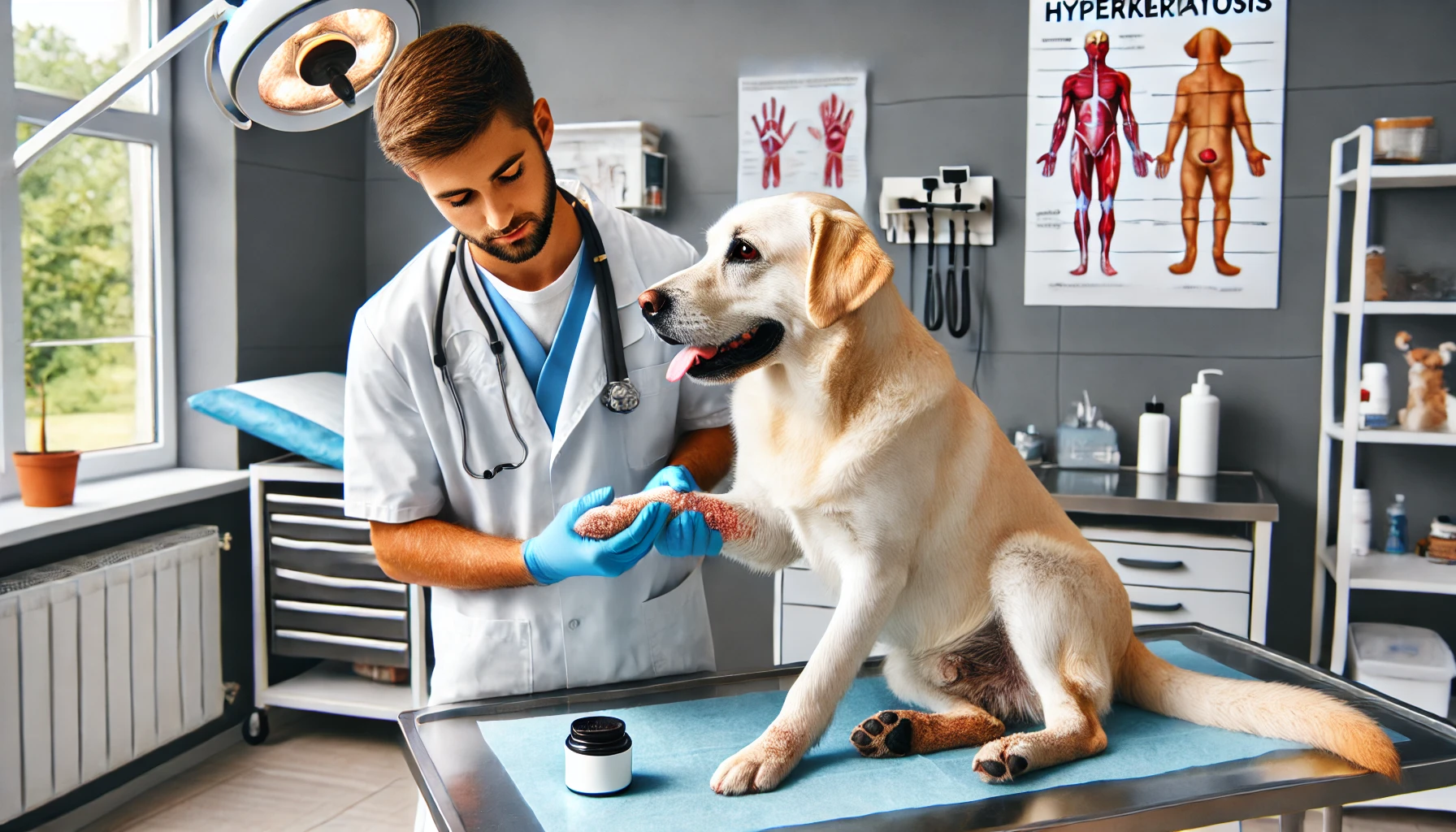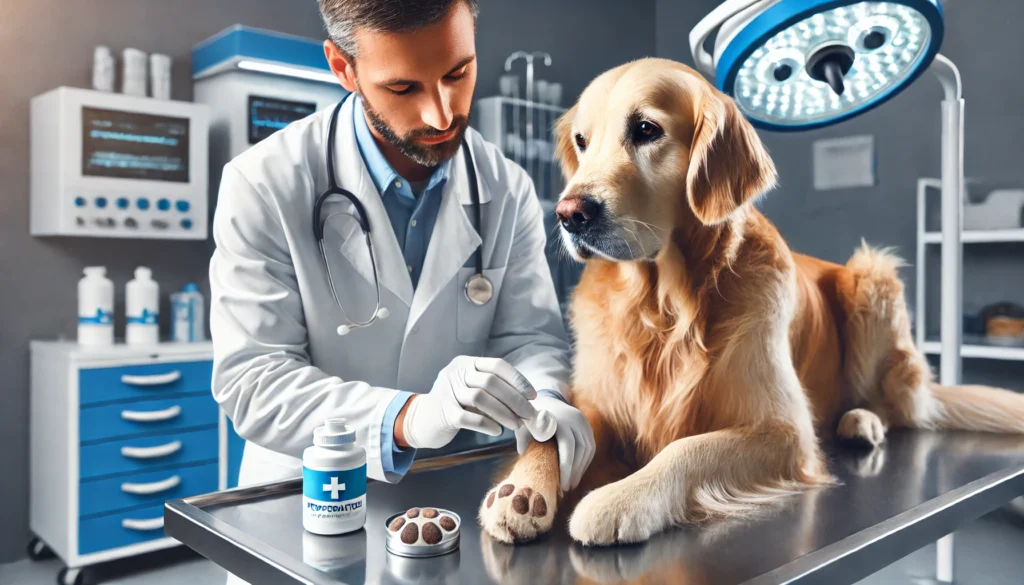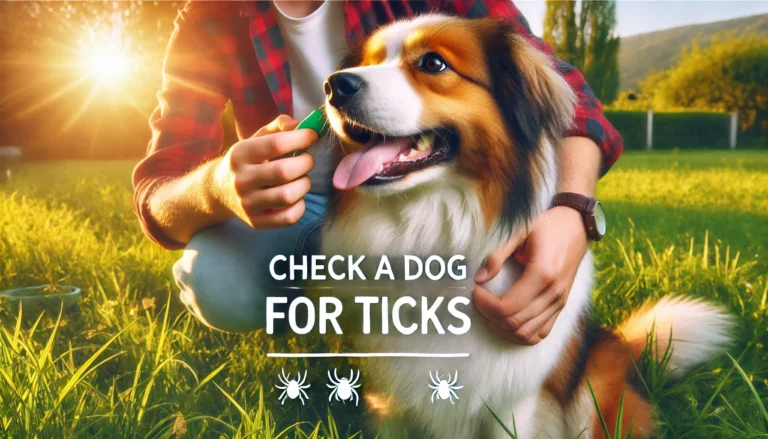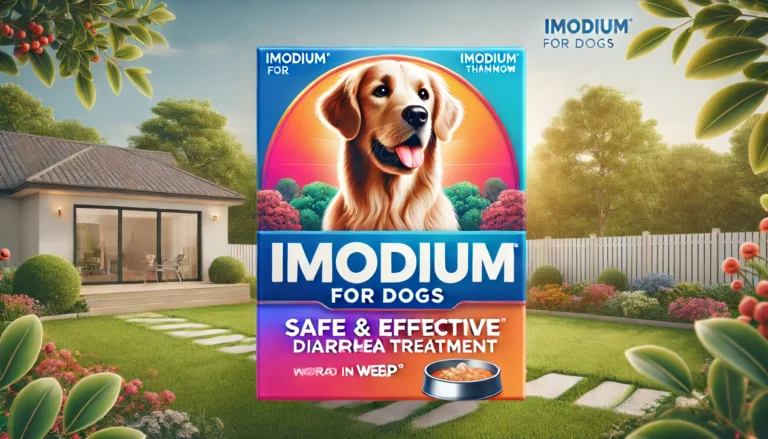hyperkeratosis in dogs

Hyperkeratosis in dogs is a common condition that affects the skin’s keratin layer, leading to excessive and abnormal growth, particularly on the pads of their paws and noses. This guide delves deep into the world of hyperkeratosis, covering everything from causes and symptoms to treatment and management strategies for your furry friends.

What is Hyperkeratosis?
Hyperkeratosis in dogs involves an overproduction of keratin, a tough, fibrous protein that forms the outer layer of a dog’s skin. This condition typically manifests in two primary forms: nasal hyperkeratosis, which affects the nose and occasionally the skin around it, and footpad hyperkeratosis, which impacts the pads of the paws.
Types of Hyperkeratosis
- Nasodigital or Nasal Hyperkeratosis: Thickening of the skin on the nose and its surrounding areas.
- Footpad Hyperkeratosis: Characterized by dry, cracked, and sometimes painful pad surfaces.
Causes of Hyperkeratosis in Dogs
The exact causes of hyperkeratosis can vary but often include genetic predispositions, environmental factors, and underlying health issues.
- Genetic Factors: Certain breeds, such as Irish Terriers and Dogues de Bordeaux, are predisposed to hereditary forms of hyperkeratosis.
- Autoimmune Diseases: Conditions like pemphigus foliaceus can trigger excessive keratin production.
- Viral Infections: Diseases such as canine distemper can lead to secondary hyperkeratosis.
- Chronic Inflammation: Continuous exposure to allergens or irritants can contribute to the thickening of the skin.
Recognizing Hyperkeratosis in Your Dog
Identifying hyperkeratosis involves observing several key symptoms:
- Thickened Skin: Obvious hardening of the keratin layer on the paws or nose.
- Cracks and Fissures: These may develop in the thickened skin, causing pain and potential infections.
- Dryness and Flaking: Affected areas may appear excessively dry and flake off.
- Discomfort or Limping: Dogs with pad hyperkeratosis may show signs of discomfort or avoid walking.
Diagnosing Hyperkeratosis
Diagnosing this condition typically requires:
- Veterinary Examination: A thorough check by a veterinarian.
- Biopsy: A skin sample may be taken to examine the extent of keratin growth.
- Blood Tests: These can help identify any underlying conditions contributing to the hyperkeratosis.
Treatment and Management
Treatment options vary based on the severity and underlying cause but may include:
- Topical Ointments: Using moisturizers or keratolytic agents to soften the keratin.
- Oral Medications: Immunosuppressants or antibiotics if an infection is present.
- Surgery: In severe cases, surgical removal of excess keratin may be necessary.
Regular Care Tips
- Moisturizing Creams: Regular application can help manage symptoms.
- Protective Gear: Dog booties can protect sensitive paws from harsh conditions.
- Dietary Adjustments: Omega-3 supplements can improve skin health.
Preventing Hyperkeratosis
Preventive measures include:
- Genetic Testing: Especially for breeds known to be predisposed to hyperkeratosis.
- Regular Vet Visits: Early detection can prevent complications.
- Proper Nutrition: Ensuring your dog’s diet supports skin health.
dO YOU KNOW
Anxiety in dogs is a prevalent issue that can manifest in various forms, including separation anxiety, fear of loud noises, and general nervousness. Fortunately, there are several effective medications available to help manage your dog’s anxiety.
Understanding Complications
Untreated hyperkeratosis can lead to:
- Infections: Cracks in the skin can allow bacteria to enter.
- Reduced Mobility: Painful paws can limit a dog’s ability to walk.
- Decreased Quality of Life: Chronic discomfort can affect your dog’s overall well-being.
Conclusion
While hyperkeratosis in dogs can be a challenging condition, understanding its causes, symptoms, and treatments can help you provide the best care for your pet. Regular veterinary care and attentive home management can mitigate the effects of hyperkeratosis, helping your dog lead a comfortable and happy life.
How to trim hyperkeratosis?
Carefully trim excess keratin using dog-specific clippers, but consult a vet first to avoid injury.
What protein deficiency causes hyperkeratosis in dogs?
Protein deficiency is not directly linked to hyperkeratosis. Hyperkeratosis typically results from genetic factors and other skin conditions.
What vitamin deficiency causes hyperkeratosis?
There is no direct correlation between vitamin deficiency and hyperkeratosis in dogs.
What is the best treatment for hyperkeratosis?
The best treatment includes regular application of moisturizers or keratolytic agents, and in severe cases, surgical removal of excess keratin.
Does coconut oil help hyperkeratosis in dogs?
Yes, coconut oil can help moisturize the skin and reduce keratin buildup, making it beneficial for managing mild cases of hyperkeratosis.
How do you treat hyperkeratosis in dogs?
Treatments include moisturizing the affected areas, applying keratolytic agents, using proper foot protection, and, in severe cases, considering surgical options.
What is the main cause of hyperkeratosis?
The main causes include genetic predisposition, underlying skin disorders, and environmental factors.
What dog breeds get hyperkeratosis?
Breeds like Labrador Retrievers, Irish Terriers, Dogues de Bordeaux, and Golden Retrievers are more prone to hyperkeratosis.
Does Vaseline help hyperkeratosis in dogs?
Vaseline can help soothe and protect affected areas by trapping moisture against the skin, but it’s not a cure for hyperkeratosis.
What supplements help hyperkeratosis in dogs?
Supplements like omega-3 fatty acids can improve skin health and may help manage symptoms of hyperkeratosis.






